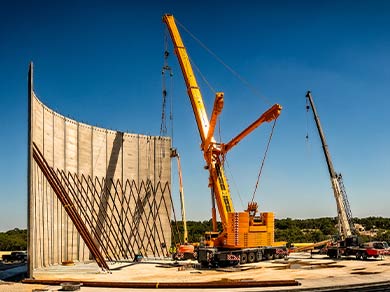Across Texas, growing populations are driving infrastructure needs. At the same time, governments do not always have the funds to spend on expensive ventures and they rarely have a taste for risk in case the project misfires
Enter the public-private partnership (known as P3, 3P, or PPP).
“A design-build P3 can be a win-win situation for sure,” says Chris Noe, P.E., PMP, Associate Vice President for Pape-Dawson Engineers, who recently helped deliver the Vista Ridge Regional Water Supply Pipeline project, the largest P3 water project in North America.
The Vista Ridge project grew from a clear trend: a steadily rising San Antonio population that would continue to need ready access to water. The San Antonio Water System sought to diversify its sources in order to protect the Edwards Aquifer (which provides most of the city’s water) as well as defend the area from drought and support growing demand.
According to Chris, a major benefit of the P3 is how it transfers risk to a private entity willing to take it on. For Vista Ridge, the investor paid a significant portion of up-front costs and agreed to bear the financial brunt for potential problems. “For P3 water projects, municipalities want to make sure they get a certain amount of water of a certain quality,” Chris says. “If the project can’t provide that, the investor would be on the hook for it.”
According to Chris, new water source projects are never a sure thing—and an initial investment is never guaranteed to produce the desired result. “First, where are we going to find the water source? What if the permitting doesn’t work out? What if the studies were wrong and the geology prevents us from drawing enough water out?” Other problems could crop up, including schedule shifts, environmental issues, and catastrophic events. “The P3 ensures that while problems get worked out, someone’s still paying on the loan that keeps growing.”
When a municipality funds the project completely, it bears all those risks alone. Or, more properly, the rate payers do, Chris says. Many municipalities are not willing to saddle their rate payers with those potential dangers. On the other hand, a private investor with ready money may take on the risk with the expectation of making a profit down the road.
With funding secured, the Vista Ridge project found the success that stakeholders sought. Land, permitting, politics, and geology all came together, and commercial delivery of water began on April 15, 2020. “People have been using the water for well over a year now,” Chris says. “We’re currently knocking out the last few items on the punch list, and then we’ll be done.”
It should be noted that not all P3s result in success. The risks are real, as the financial challenges of Austin tollway SH 130 (which resulted in a Chapter 11 bankruptcy filing for the investor) have shown. Still, Chris sees P3s as the way of the future for locations that need water or sewer infrastructure.
“A P3 can be a good thing for all involved,” Chris concludes. “It was great to see how Vista Ridge unfolded.” The result is that the project now provides the growing San Antonio community 20% more water—and will continue to do so for decades to come.
Download the article here: Industry Insights 2021-Issue4 P3: A Third Way to Improve Your Infrastructure
